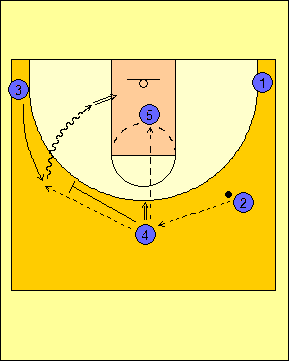I would like to comment in this post some of the parameters that I consider necessary to take into account when carrying out the video scouting work, in this case concerning the opponent team.
How many games do I have to watch?
It would be normal, at least, watching the opponent’s last 3-4 games, and also the last game played against us.
However, often we do not have enough material (the games were not recorded or we do not have access to them, poor quality of recordings, etc.), and also conditions such as lack of time, as in semi-professional as amateur categories, the most common is the head coach will be who takes care of this work by himself, as well as other important things for the team and for the club.
Taking it into account, at least we have to watch the very last game available (if there are two, even better), and if we are already playing the second time of the tournament and we got a copy of the first game, we will also analyze this one.
What factors shall we consider in order to analyse our rival?
Broadly speaking, we can divide the work into three main areas, such as:
- Collective – offense.
- Collective – defense.
- Individual – top players.
How are they playing in offense, or how do we think they are going to attack us?
Firstly, we are focusing on the team offense. We should consider some parameters such as:
- Fastbreak: – running whenever they are able to do it – after stealing the ball, getting rebound, even after the basket is received – linking with their transition rules – they prefer to play in static – usually they are ending with perimeter players – usually they are ending with inside players.
- Early offense: looking for putting the ball inside – arriving with P&R (such as middle, side, etc.) – arriving with off ball screens (such as pindown, cross screen, etc) – motion offense – if there is no fastbreak, they prefer to continue playing in static.
- Static: knowledge of team sets – focusing on the most used sets and on the sets that are giving more advantages themselves – valuing which ones may be harder to defend for our team – SBLOB.
- Final situations: last seconds of clock possession and quarters – which are the most used sets in last minutes – who is the player that most times has the ball at the decisive moments – how they are managing these actions.
- Special situations: how they react to different defensive options (such as full-press, zone defense, men to men, etc.) – how they react to alternative defenses.
How are they playing in defense, or how do we think they are going to defend us?
As for the opponent’s defense, we have to pay attention after they shoot:
- Offensive rebound: ability to attack it – this allows them to make a better or worse defensive balance – second offensive options (this situation could make it easier for us, or it could help them to stop our fastbreak).
- Defensive balance: defensive role assimilation in the first 2-3 seconds that do not have the ball (after shooting – after turnovers) – outlet pass defense – collapsing the middle ways – pressing the baller – granting outside shots.
- Transition: managing the following seconds – low or great intensity after stopping fastbreak – granting cuts through the paint / outside shots – maintaining their level of attention.
- Static defense: baller (press, control) – ball inside (collapsing, double team, isolations, soft or hard helps) – P&R defense (such as under, push, show, etc. depending on the situation) – off ball screens defense (such as under, follow, switch, etc. depending on the situation) – 1×1 actions (individual ability, helps and rotations/recoveries) – closing out.
Individual reports
Strengths and weaknesses about the top players of our opponent:
- By position: smalls (playmaker-guard-small forward) – bigs (power forward-center).
- Offensive skills: fastbreak – shooter (pull up / set shot) – driver – both hands – low post movements – offensive rebound – free throw.
- Defensive skills: baller defense – helps – defensive rebound – ability to make a good defensive balance – efforts for the team – close out actions.
It will be important to take into account which players will take on a leading role in the decisive minutes of the game, but also to know the ability of those who are playing from the bench, their strengths and weaknesses (“2nd unit” gets to keep a good defensive level, 2nd playmaker suffers against full-press defense, losing outside shooting potential, etc.).
Final product
Once all this is evaluated, we will prepare a video, usually between 6 and 9 minutes long, in which these all three areas must be there, and last but not least will also be useful to share the most important information, which has been already filtered for our players.
